Japanese Fireworks from the 1800s are Poetry in Motion
Initially in orange tones, these 'fire flowers' have taken on increasingly vibrant colours over the years.
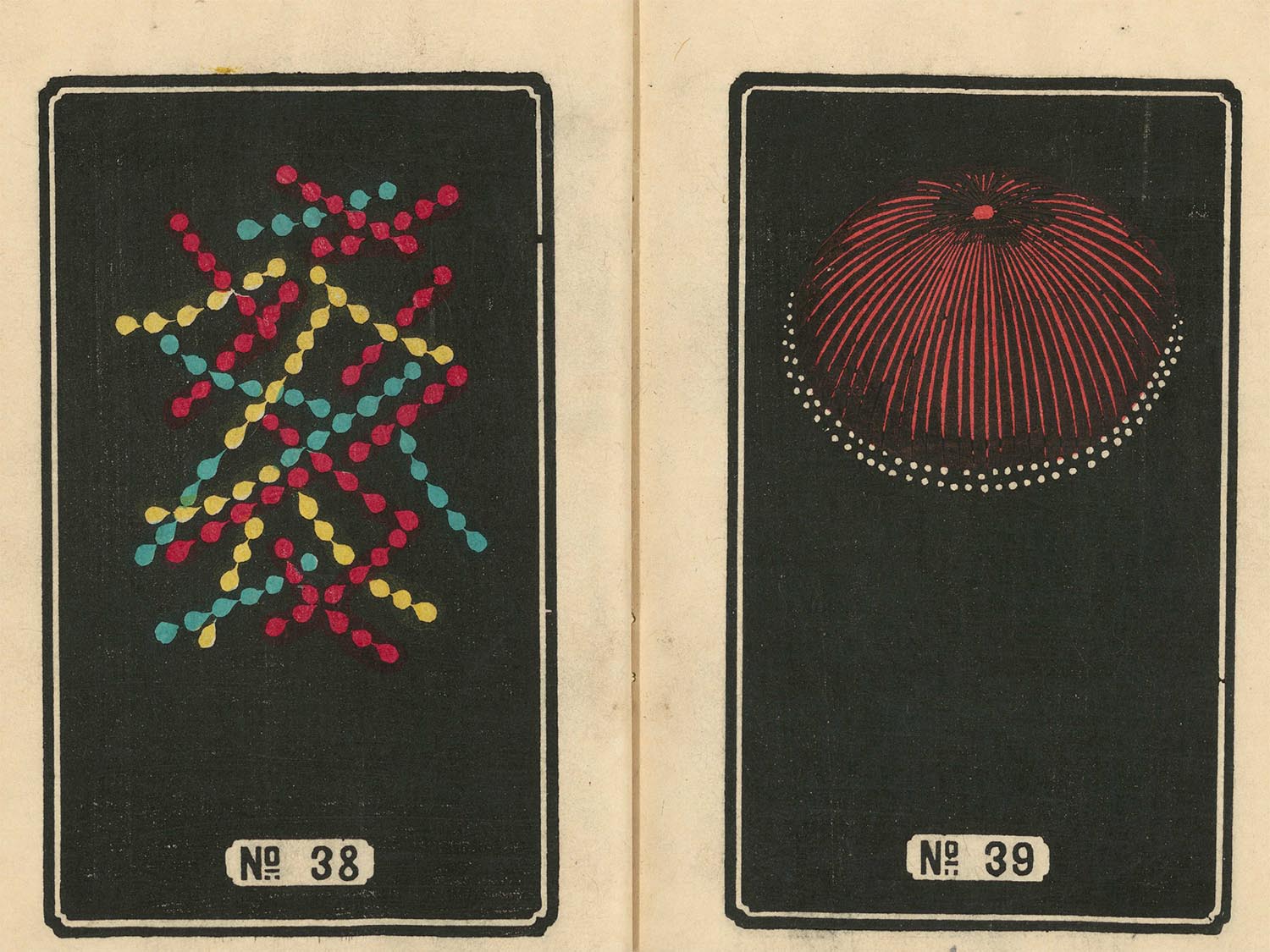
© Yokohama City Library
With their corollas and long evanescent tails, these illustrations might be mistaken for abstract reproductions of flowers. In fact, they are Japanese fireworks, or hanabi, the contraction of hana, flower, and bi, fire. As such, one isn’t so different from the other.
These illustrations, dating from the late 19th century, depict the firework designs of two Japanese pyrotechnicians from Yokohama, Yokoi and Hirayama. The latter was a pioneer in Japan in incorporating more vibrant colours into his fireworks, the earliest Japanese fireworks having been mainly in orange tones only.
A national passion
The Yokohama City Library has digitised six of these advertising catalogues to make them available to the general public and possible to download online. The images, the majority of which appear against a black background, come with no explanation apart from the broad categories of motifs: ‘vertical wheels’, ‘phantom circles’, or ‘coloured floral bomb shells.’
The Japanese are big fans of fireworks, which are an important feature in the country every summer. Photographer Hidenobu Suzuki captured this passion for pyrotechnics in close proximity to the pyrotechnicians themselves.
These illustrations of late 19th-century Japanese fireworks can be viewed online on the Yokohama City Library’s website.
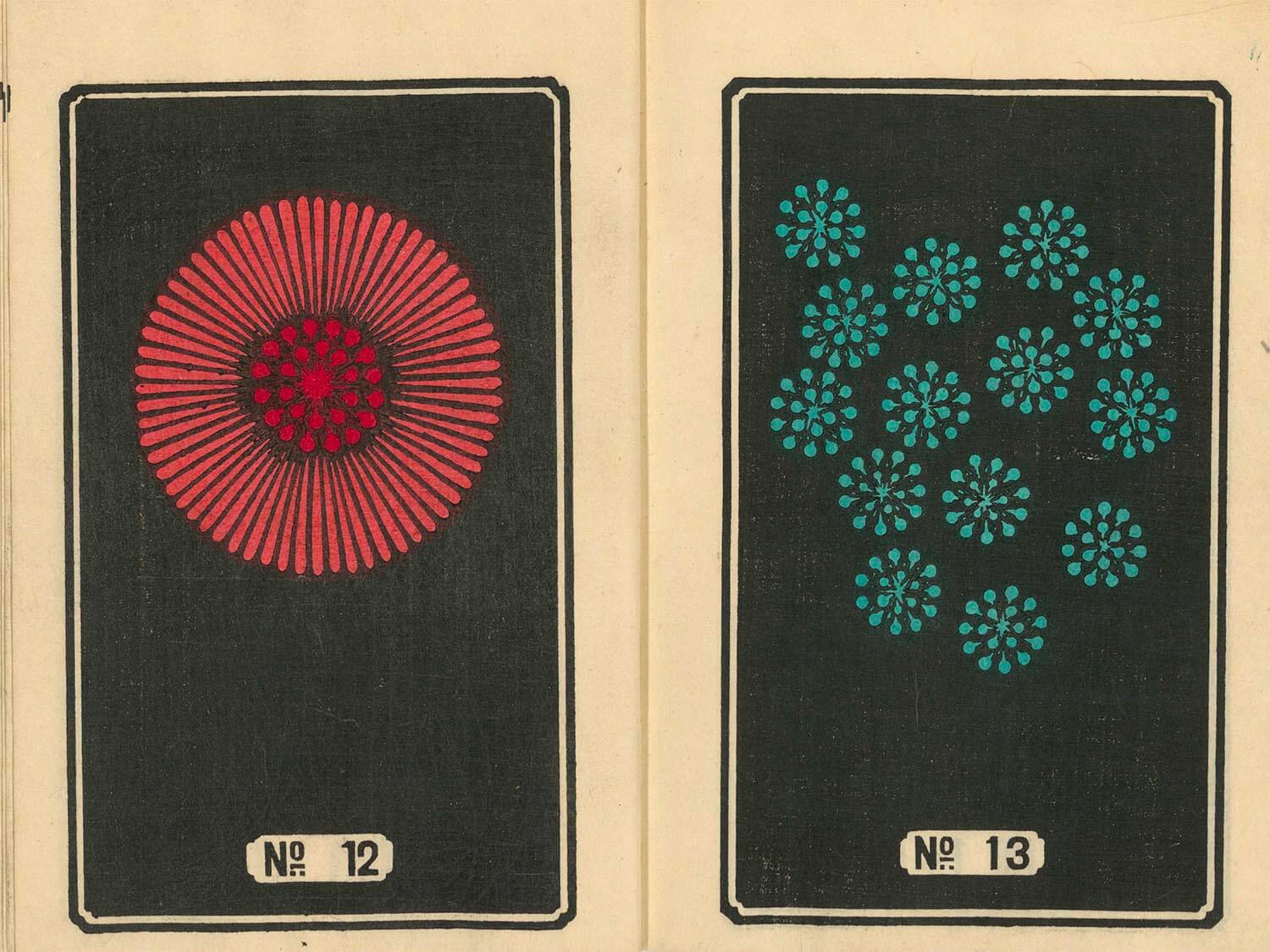
© Yokohama City Library
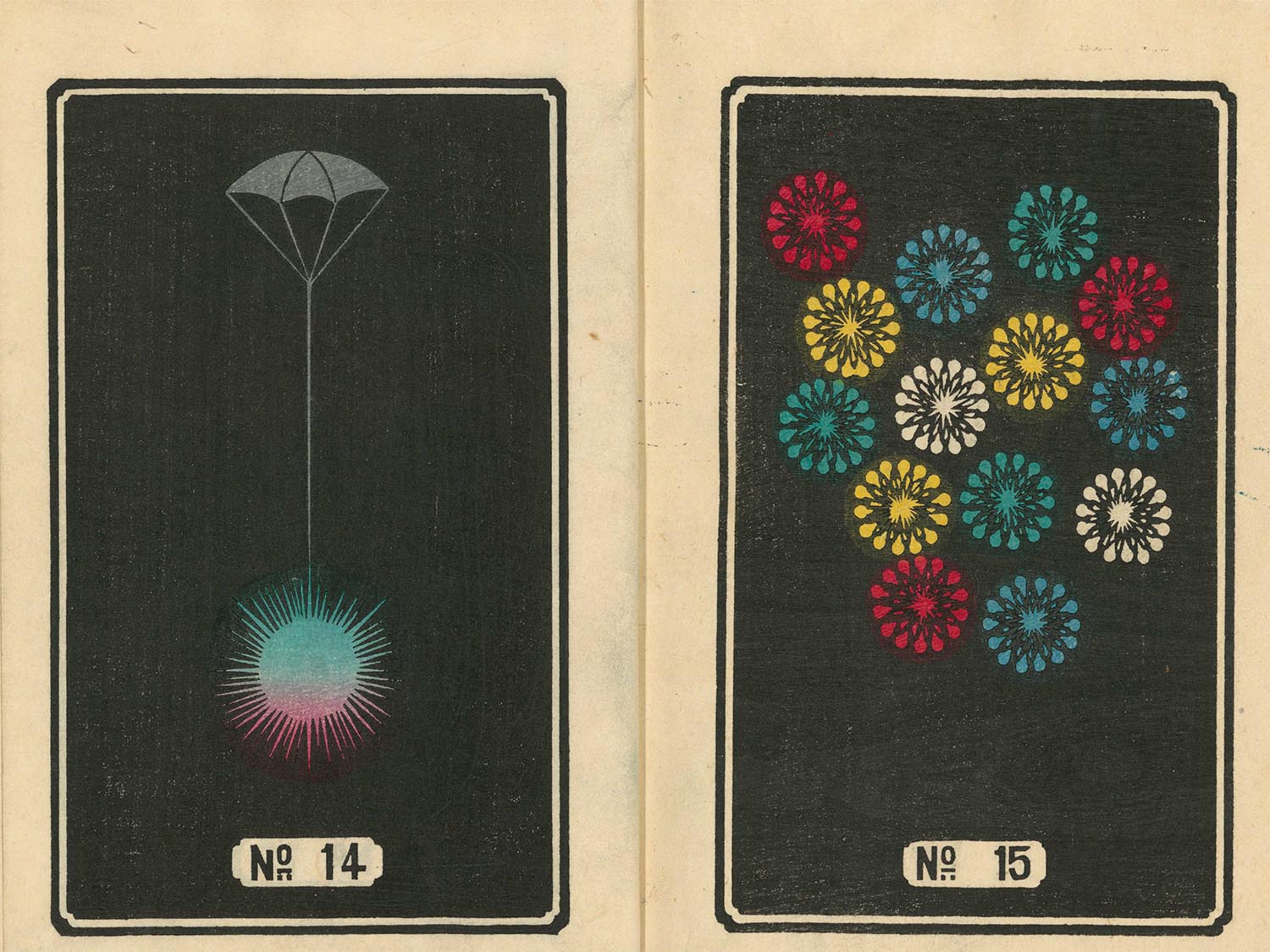
© Yokohama City Library
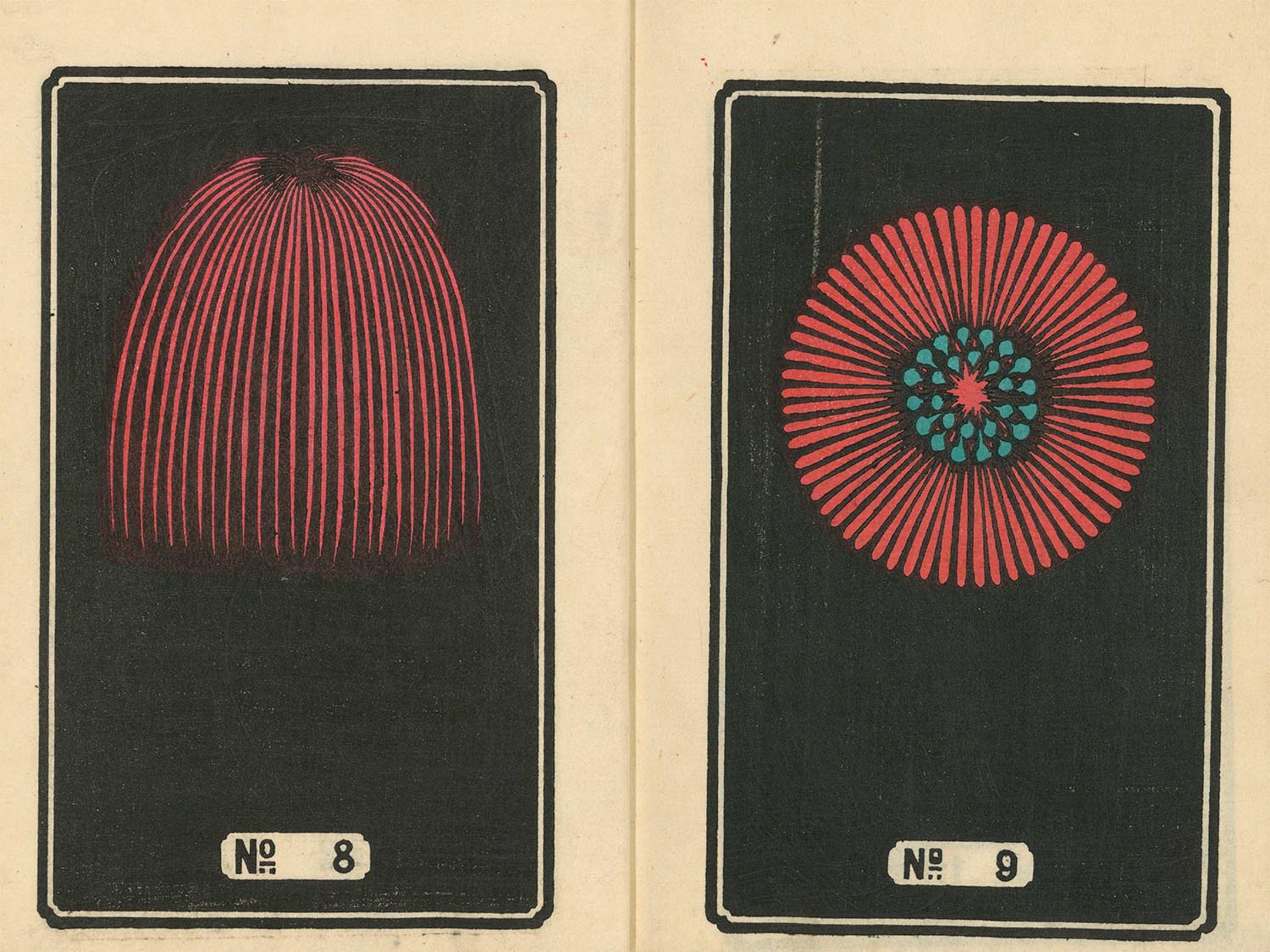
© Yokohama City Library
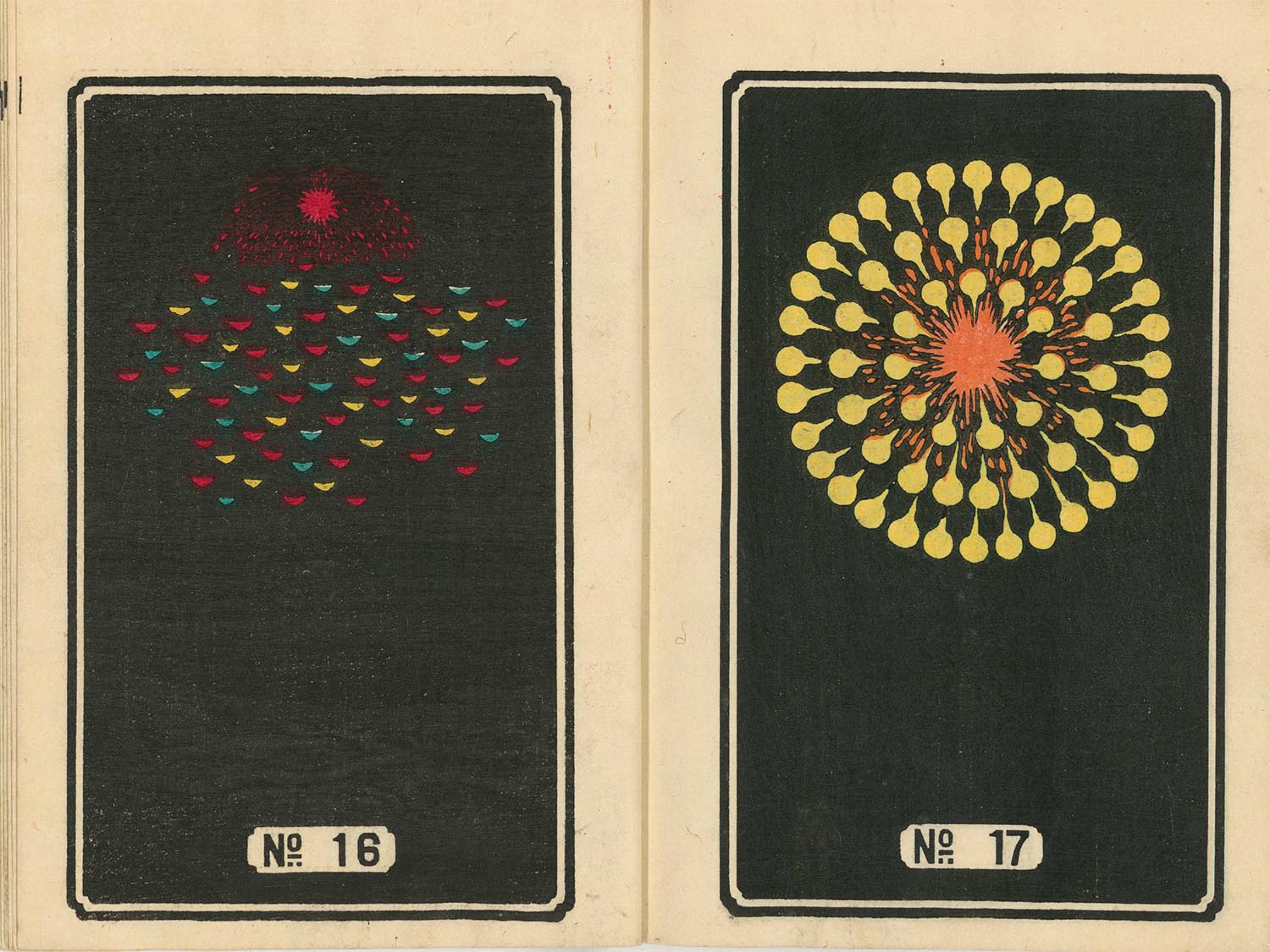
© Bibliothèque publique de Yokohama
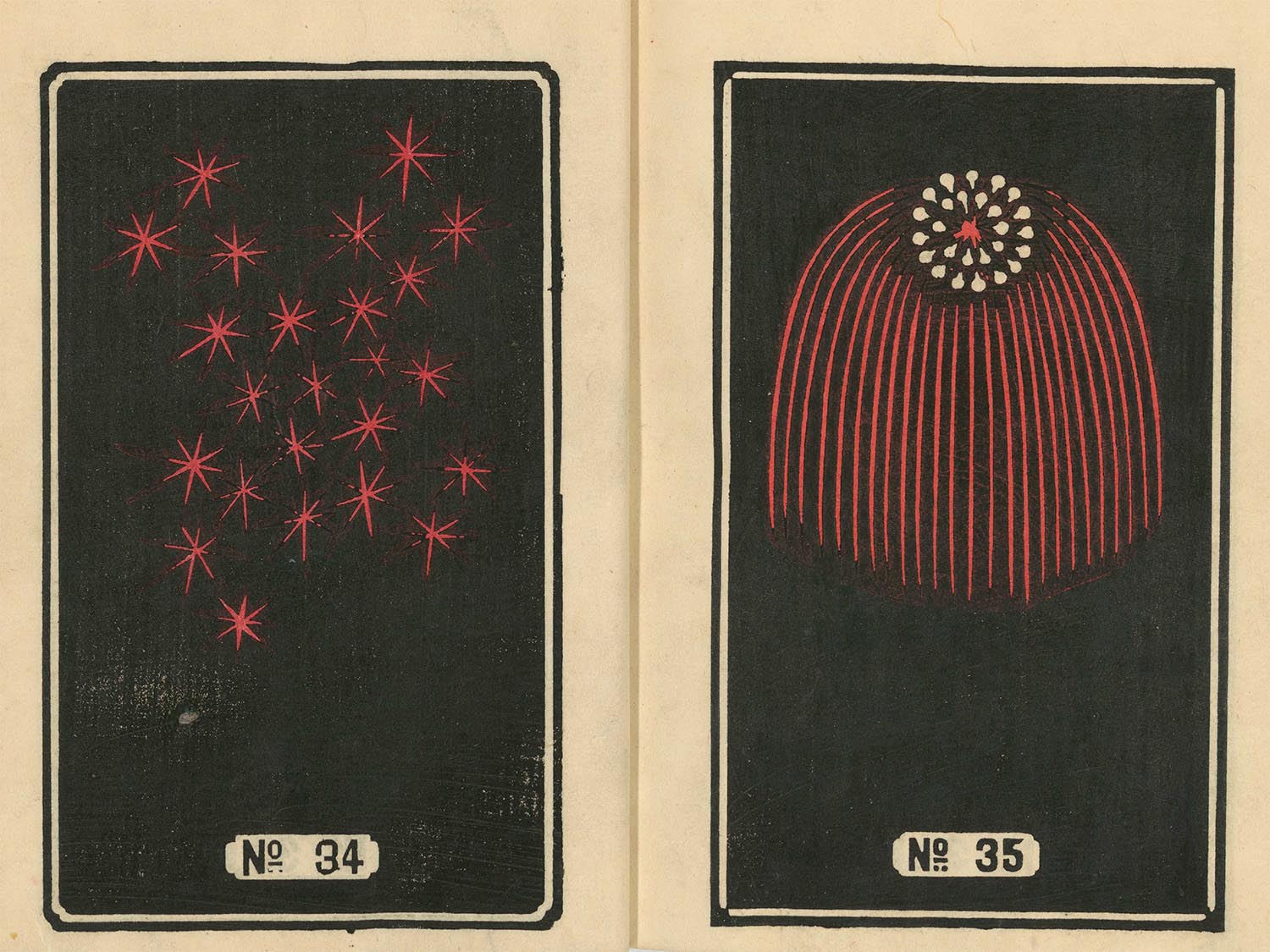
© Yokohama City Library
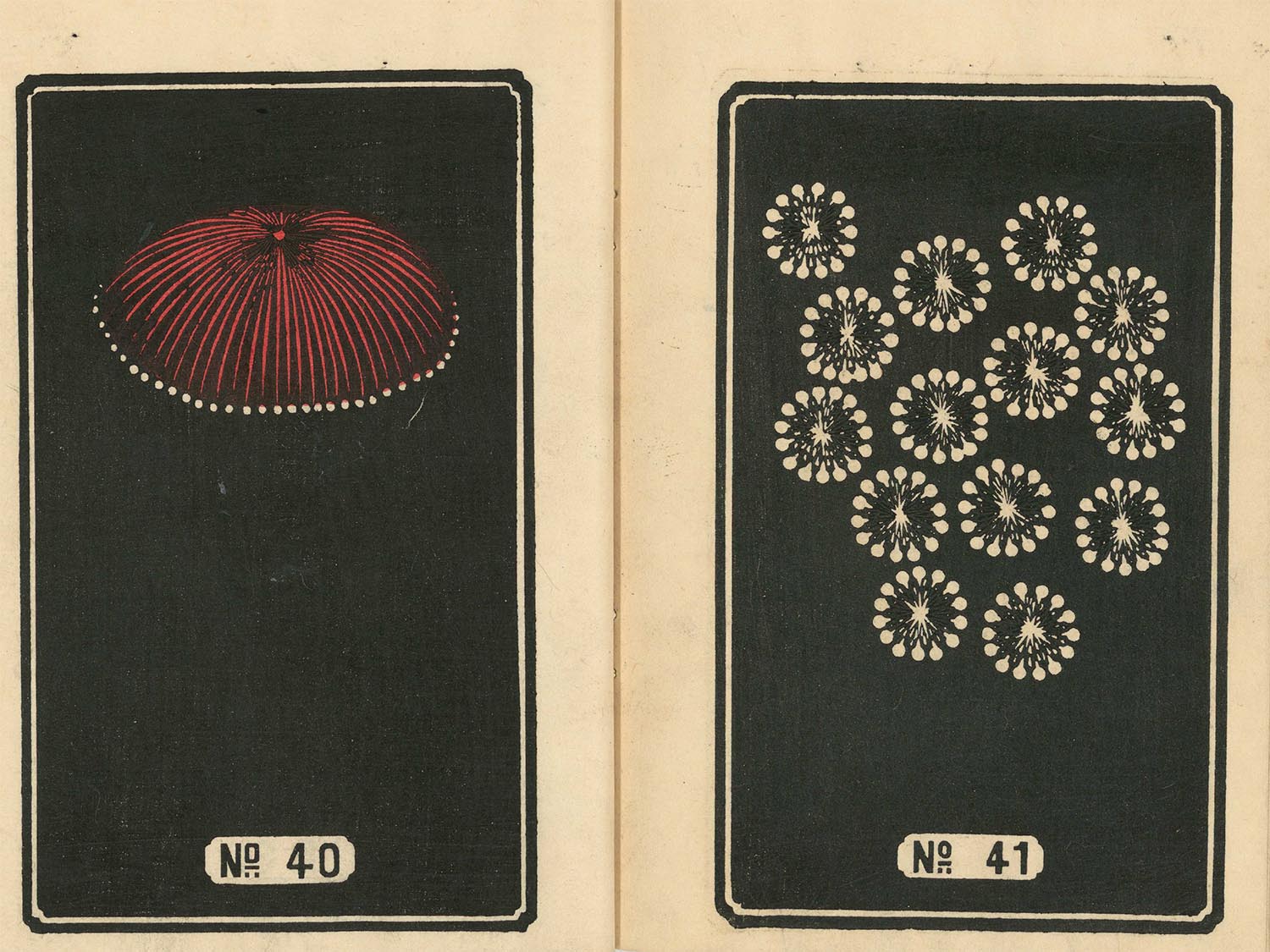
© Yokohama City Library
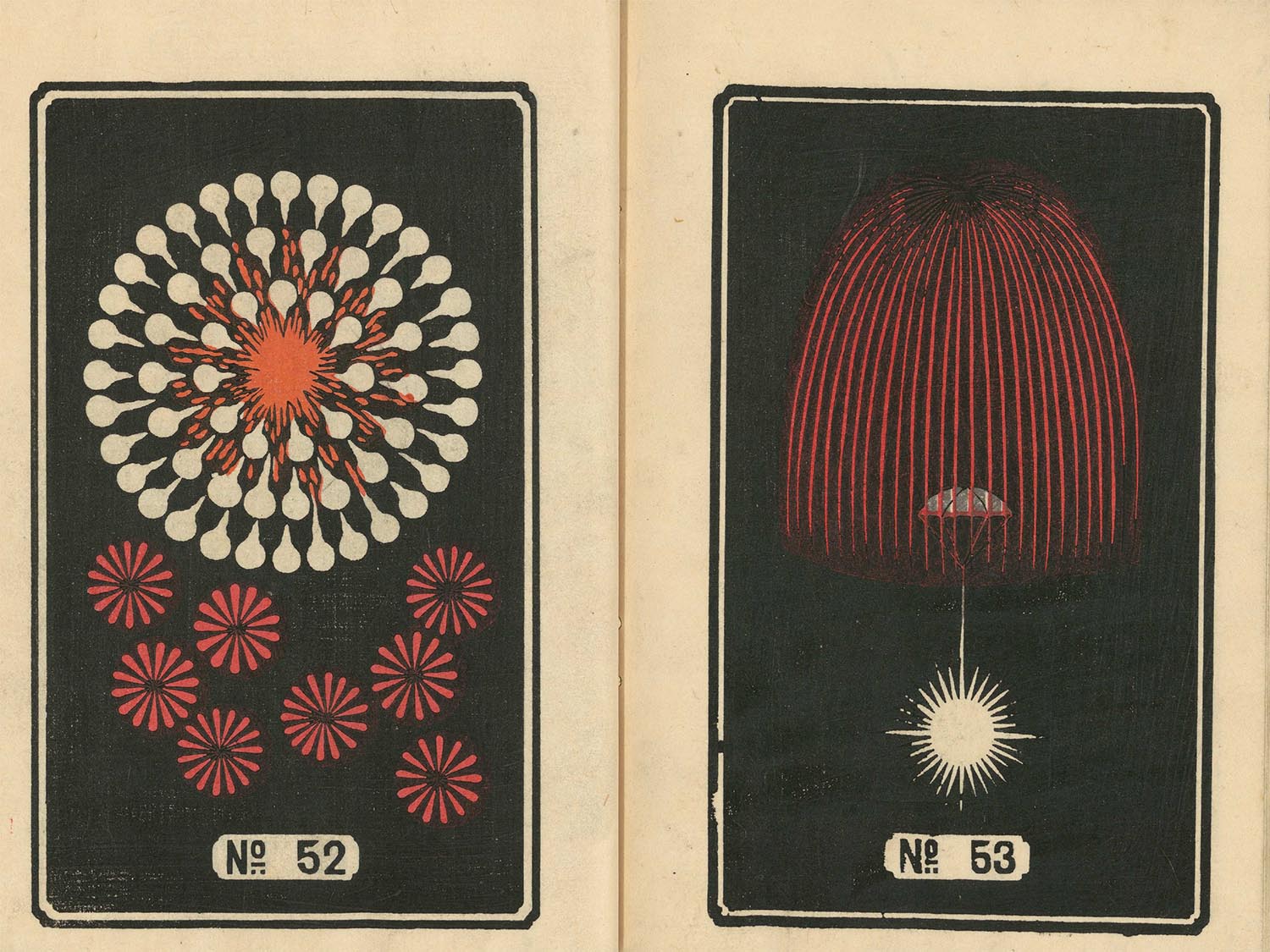
© Yokohama City Library
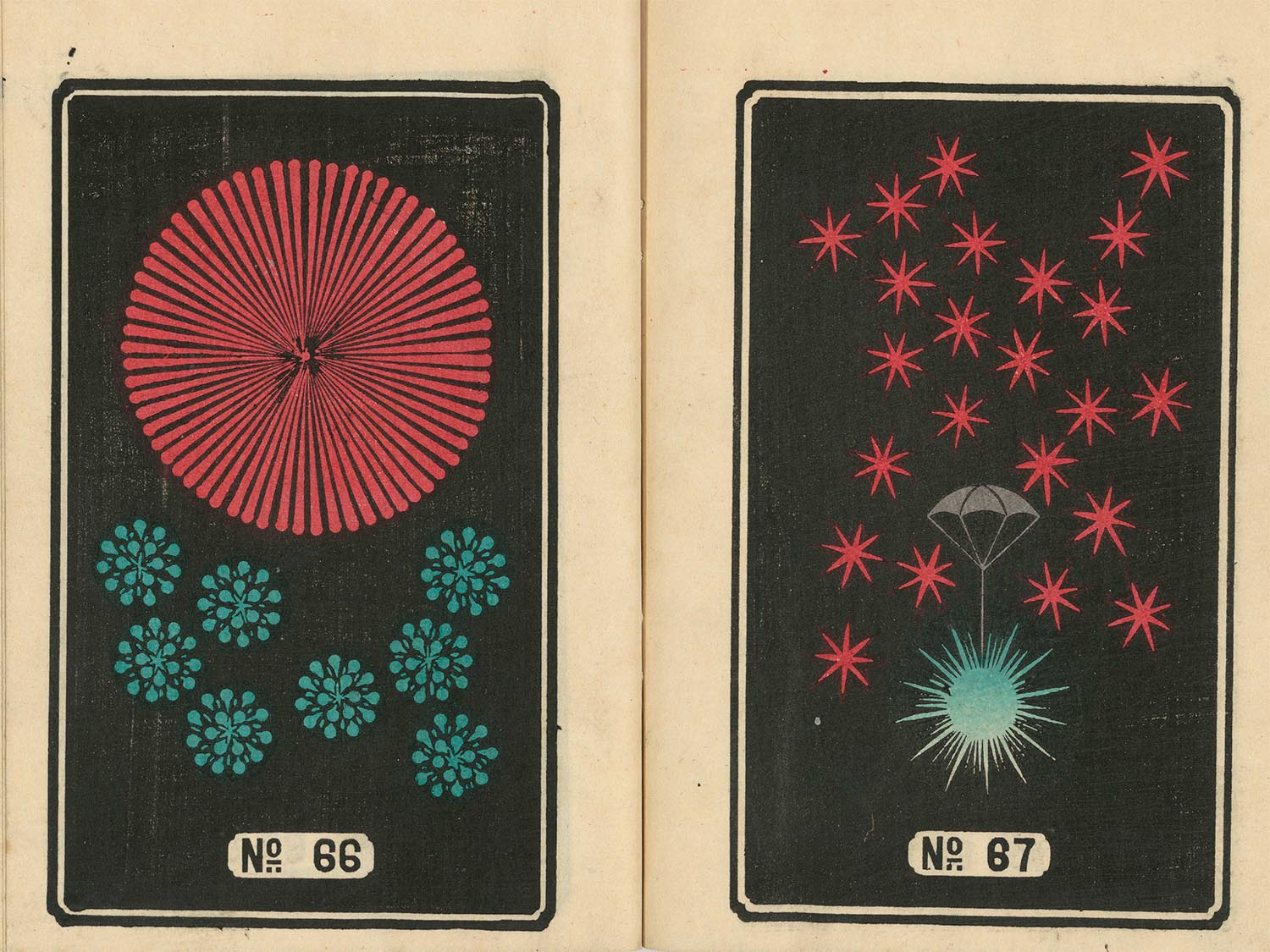
© Yokohama City Library
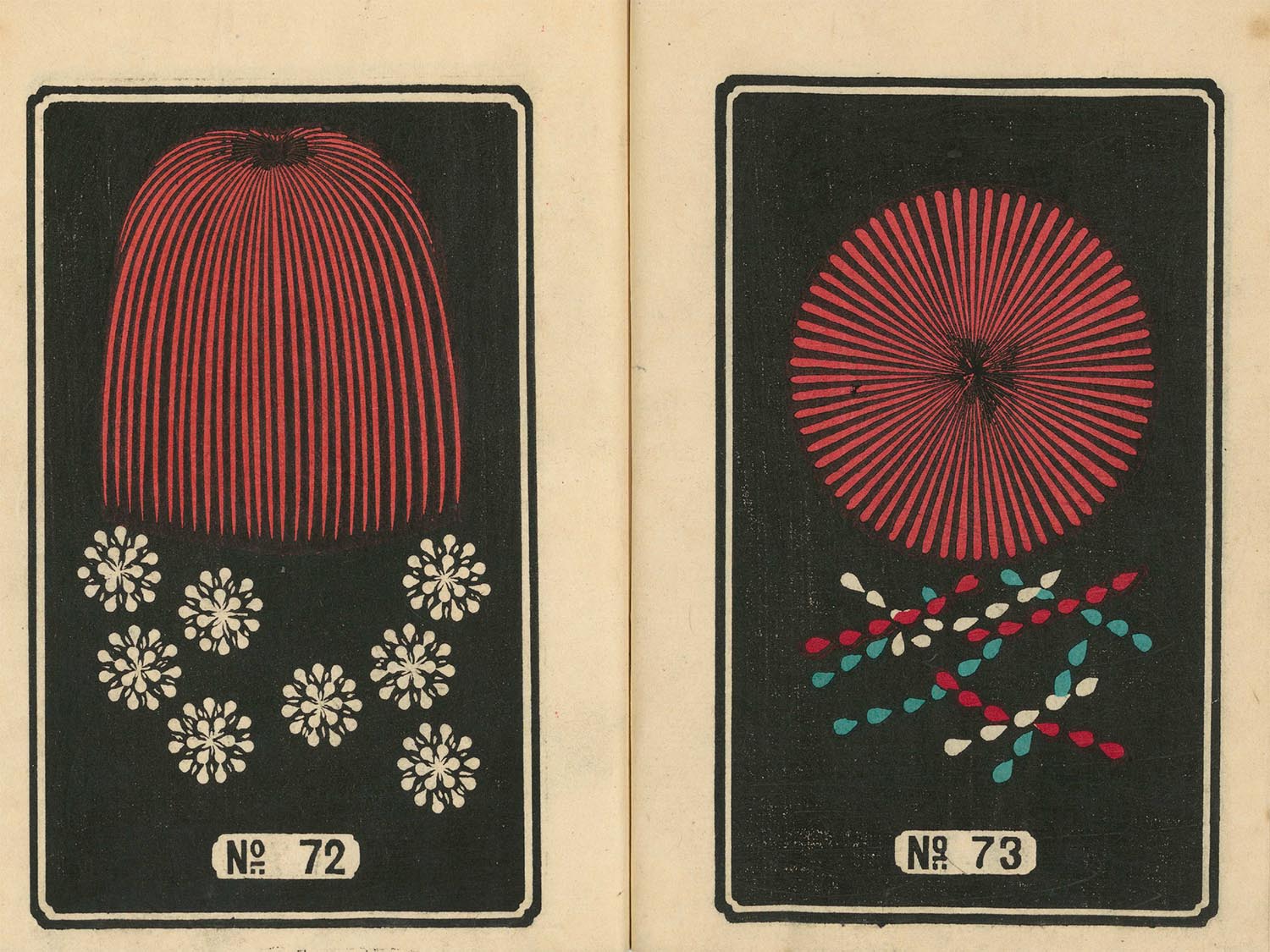
© Yokohama City Library
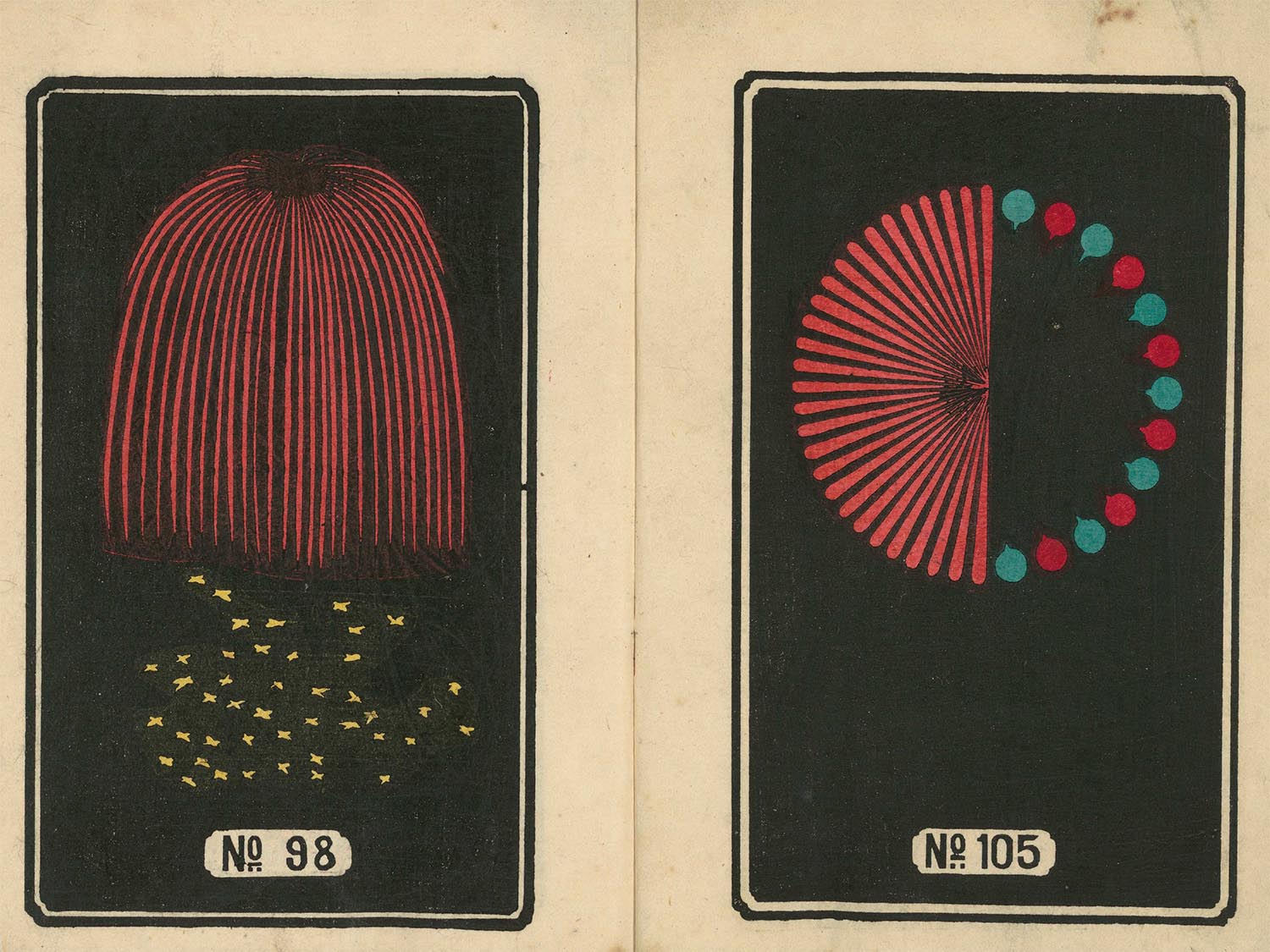
© Yokohama City Library
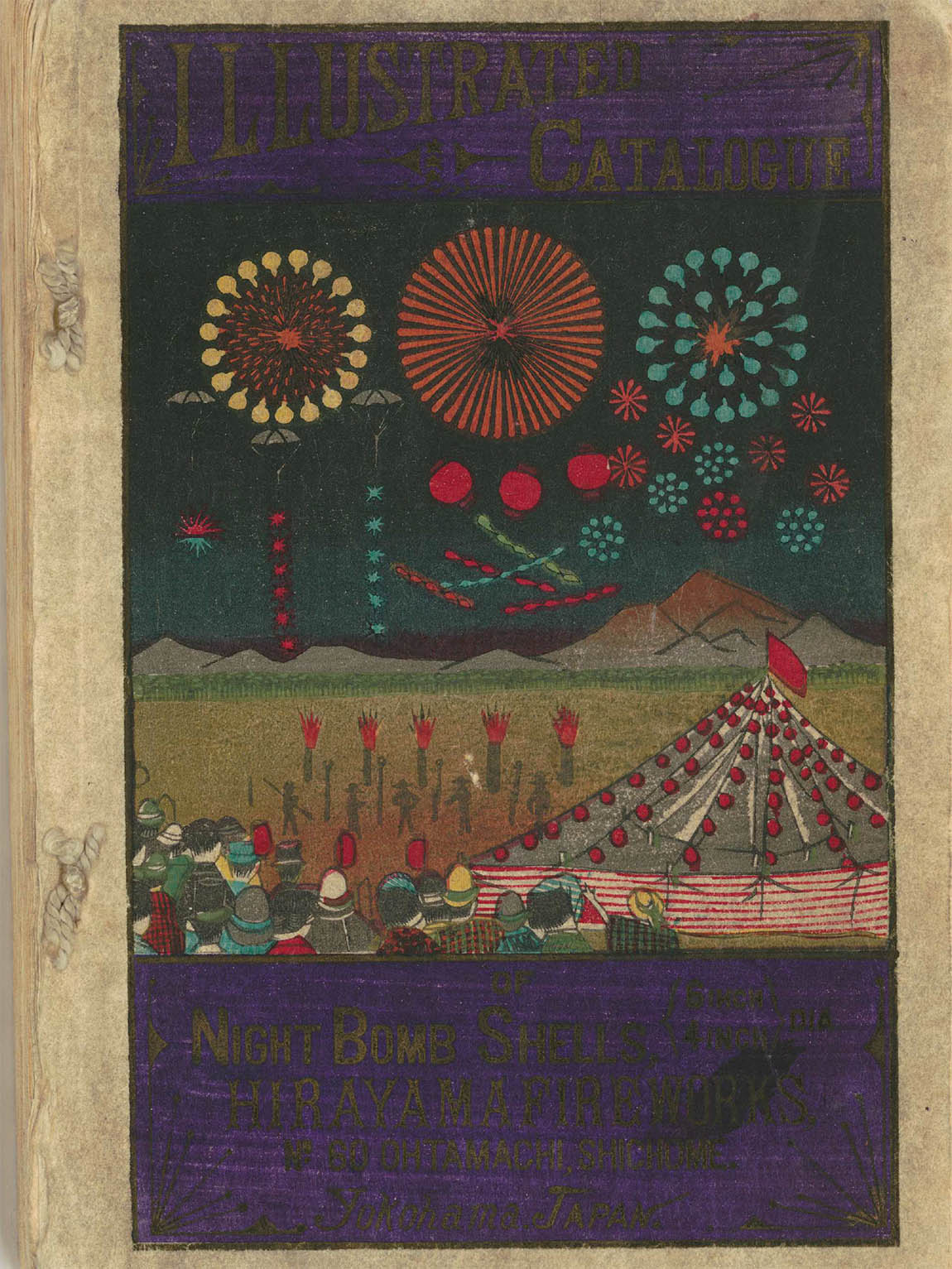
© Yokohama City Library

© Yokohama City Library
TRENDING
-
The Tattoos that Marked the Criminals of the Edo Period
Traditional tattoos were strong signifiers; murderers had head tattoos, while theft might result in an arm tattoo.

-
Chiharu Shiota, Red Threads of the Soul
Last year, more than 660,000 people visited the retrospective 'Chiharu Shiota: The Soul Trembles' exhibit at the Mori Art Museum.

-
‘Before Doubting Others, Doubt Yourself. Who Can Truly Say a Dish Isn’t What It Used to Be?’
In ‘A Non-Conformist’s Guide to Surviving Society’, author Satoshi Ogawa shares his strategies for navigating everyday life.

-
The Story of Sada Yacco, the Geisha who Bewitched Europe
Described by Dazed magazine as the first beauty influencer, she has been restored to her former glory since 2019.

-
Ito Jakuchu's Naturalist Paintings
From 15 September until 14 October 2018, the Petit Palais showcased the artist's iconic ‘Images of the Colourful Realm of Living Beings’.





